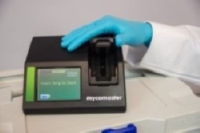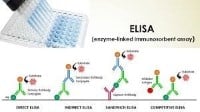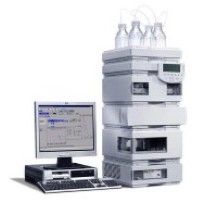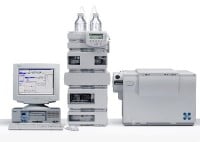Tools for Mycotoxin Analysis
Mycotoxins, pesticides and antibiotic residues are a major safety concern for human and livestock food supplies. Whereas mycotoxins are from natural origin, produced by certain moulds (fungi), the others are man-made, mycotoxin management is therefore more complicated. The contamination of food by mycotoxins depends on various factors like environment, stress, geographical location, storage, host species etc. Mycotoxins appear in food chain because of fungal infection of crops both before and after harvest. Several hundred different mycotoxins have been identified, but most common health safety concerns are attributed to aflatoxins, ochratoxins, fumonisins, zearalenone, trichothecens like deoxynivalenol, T2/HT2 toxin and patulin. Elimination of mycotoxin contamination of food supplies is difficult, hence exposure to mycotoxins should be minimum to protect ourselves and livestock.
Determination of mycotoxin levels in various food, feed and feed ingredients is a challenging exercise because of the problems associated with sampling of heterogeneously distributed compounds and the fact that the analytical methods need to have low limits of detection generally in range of mg/kg (ppm) or µg/kg (ppb) depending upon the mycotoxin being analyzed. Analysis at the very low level of detection and quantification requires a very high specificity to avoid analytical interferences and uncertainties. A sustained international effort is being made in order to develop and improve the methods for detecting and quantifying the mycotoxins.
In developing a reliable, specific and sensitive method for mycotoxin analysis one should give much attention to matrix effect. In analytical chemistry, the matrix effect is the combined effect of all components of the sample other than analyte of interest exerted on the quantification of analyte (mycotoxin in this case). If a specific component can be identified as causing an effect then this is referred to as interference. The matrix effect can be observed as a loss in response or increase in response and hence under estimation or overestimation of the mycotoxin. Therefore, the matrix effect will detrimentally affect the accuracy, precision and sensitivity of the analytical method. Various techniques have been described to overcome the matrix effect. The matrix effect is very important for mycotoxin analysis because mycotoxins themselves are of diverse chemical entities; they are being analyzed from various and diverse sample matrices.
Current tools
The methods employed for the mycotoxin analysis mostly fall into the general categories of either chromatographic methods or immunological methods. All these analytical methods require solvent extraction of the mycotoxin from the matrix. For chromatographic analysis, the next step involves extract cleanup followed by concentration. Another component of the complexity in mycotoxin analysis is the varied chemical and structural properties of mycotoxins. This makes the requirement of developing specific method for individual mycotoxin. However, this challenge has been successfully overcome by the use of expensive and sophisticated mass spectrometric methods. Hence, when selecting a method for mycotoxin analysis one should consider the purpose for which the results are needed; the matrix to be analyzed; the detection limit required and the availability of expertise and infrastructure.
Over the years various tools and methods have been developed to detect and estimate the mycotoxin levels (Table 1). For survey and control of mycotoxin levels and implementation of mycotoxin regulations in developed countries, several official analytical methods have been validated by AOAC international and the European committee of standardization (CEN). Most of the modern official methods are based on high performance liquid chromatography (HPLC) with various detectors. These methods recommend the use of immuno affinity columns (IACs) for sample matrix cleanup prior to HPLC analysis. Recent advances made in liquid chromatography mass spectrometry (LC MS) have enabled the analytical chemists to achieve very high specificity and sensitivity in mycotoxin analysis. The technique also enabled to simultaneous analysis of multi mycotoxins in a single analytical run. However these official methods are very expensive, require sophisticated laboratory environment with trained and skilled laboratory personnel.
In addition to the official methods, rapid screening methods have been developed for situations where quick decisions are required, such as at feed mills, silos and granaries. Most of these rapid methods are based on immunological methods. They include quantitative enzyme linked immunosorbent assay (ELISA), Immuno fluorometric methods, lateral flow immuno assay (LFIA) devices and range of qualitative tests that give yes / no result for contamination above or below the set control level. Apart from immunological methods, traditional qualitative / semi quantitative thin layer chromatography (TLC) methods are also being used for the analysis. Sophisticated, quantitative high performance thin layer chromatography (HPTLC) methods are also being used in mycotoxin analysis. TLC has an advantage of testing several samples simultaneously.
Future tools
In recent days, antibody or aptamer based sensors have attracted more and more attention because of their advantages of high sensitivity and specificity, high throughput, portability and reusability. These sensors are of different formats like thin films, microfluid devices, micro arrays, and lateral flow devices (LFD). Among them LFDs could be most successful and are simple to use. Interfacing with measuring devices is easy. Several sensing strategies are being applied. The sensors are mainly of two types, i.e. optical sensors and electrochemical sensors. These upcoming novel technologies are still in nascent state and are fast evolving.
Table 1. Comparison between different analytical methods for mycotoxin analysis
|
Method |
Advantages |
Disadvantages |
|
Simple TLC without sample clean-up |
Simple, Inexpensive, Multiple sample analysis in single run, Can be used as rapid screening method |
Lab facility required, Poor Sensitivity, Poor precision, Qualitative only, Quantitation possible only if coupled to densitometer |
|
HPTLC with Sample clean-up |
Good Selectivity, Sensitivity, Quantitative, Rapid, Multiple sample analysis in single run, Can be used as screening method. |
Expensive, Lab facility required, Expertise required, May require chemical derivatization. |
|
HPLC |
Good, Selectivity, Sensitivity, Quantitative, Automatic analysis possible, Official methods are available |
Expensive, lab facility required, Expertise required, Sample clean-up required, Chemical derivatization may require, May require a new method for each type of matrix. |
|
GC (Gas Chromatography) |
Simultaneous quantitative analysis of multiple mycotoxins in single run possible, Selective and Sensitive. |
Expensive, lab facility required, Expertise required, Sample clean-up required, Chemical derivation is required, Sample matrix may have impact on method development, Controlling the derivation efficiency is crucial. |
|
LC-MS
|
Highly sensitive and specific, Simultaneous high throughput quantitative analysis of multiple mycotoxins possible, Official methods are available, Capability to generate structural information, Use of same method for multiple matrices, Minimize the matrix effect by matrix matched calibration or isotopically labeled internal standards. |
Very Expensive, Specialized lab facility required, Expertise required, May require sample clean-up, Matrix effect should be addressed properly. |
|
ELISA
|
Convenient and sensitive for detection, Ease of operation, Rapid multiple sample screening, Simultaneous screening of limited multiple mycotoxins is possible, Low use of organic solvents, Simple sample preparation |
Require laboratory facility, Poor specificity, Cross reactivity with related structural compounds, possible false positive / negative results, Matrix effect should be addressed. |
|
LFIA
|
Convenient and sensitive, similar to ELISA, Ease of operation, rapid, Simple sample preparation, Lab independent, Does not require high skill. |
Poor specificity, Not for High throughput, Cross reactivity with related compounds, possible false positive / negative, Matrix effect should be addressed. |
|
Spectral analysis technology (FTIR, NIR, FT Raman) |
Qualitative and quantitative, Possible to get the structural information of the mycotoxin from the complex matrix in situ. |
Expensive, Involves very complex analytical interpretation of spectra. Spectral overlapping may result in difficulty in interpretation, Limited Quantitative ability. |
|
Microchip or thin film based sensors |
Highly sensitive and high specificity, rapid detection and quantification, Multi mycotoxin analysis, Cost effective, Lab independent. |
The technology is futuristic, Still in research stage but fast evolving |
Requirement for quick, regular and cost effective analysis
Measuring mycotoxin levels in feed batches of feed mills, and raw material processing plants can be a meticulous and expensive process, with a long wait and distant laboratories involved. By that stage, the final feed may already have been manufactured or even fed to the animals. What is needed is speed, efficiency and preferably low analytical cost. Hence the requirement of rapid Mycotoxin detection systems.If we look into current rapid detection systems, LFIA devices are the most prominent devices. They are portable, easy to handle, do not require expertise to handle, can be used in, out of laboratory environment, as a tool for quick decision making on quality of raw material.
One such technology that has been standardized and validated by Trouw Nutrition is – Mycomaster. Mycomaster is a rapid, cost effective and easy to use mycotoxin detection system, which can be operated outside the laboratory. The system works on principle of quantitative LFIA technique. Mycomaster offers an accurate yet easy to use alternative as it enables feed millers and integrators to analyze the mycotoxin levels within matter of minutes at the site itself. Since no laboratory facilities are required, the costs are also only 20-25% of the average price for conventional HPLC testing. Table 2 outlines approximate cost and time requirement for the analysis using different methods.
Table 2. Mycotoxin analysis time and cost comparison
|
|
Mycomaster
|
ELISA
|
HPLC
|
LC-MS
|
|
Delivery time for the test |
15-20 minutes at site |
2-4 days at remote lab 2-4 h. at site lab |
4-6 days at remote lab |
4-6 days at remote lab |
|
Indicative cost per test |
20-25% |
About 50% |
100% |
About 250% |
Mycotoxin contamination levels are difficult to predict and fluctuate significantly from season to season, from one year to next and between batches, due to difference in harvesting conditions, the origin of raw materials and the conditions in which these raw materials are stored. The ability to perform rapid analysis on-site at any chosen time without the need for a laboratory is a real benefit. It enables feed millers and integrators to have a practical risk management system that they can control and operate themselves. This eventually enables the feed millers and integrators to quickly assess the mycotoxin levels and allow them to adequately treat the feed to guarantee high quality for the end users.
Mycomaster enables to rapidly determine the mycotoxin contaminants
The complete mycomaster kit consists of two boxes and can be easily transported and operated at any preferred location. The system offers a rapid method for quantifying six most common mycotoxins: aflatoxin (AFLA), deoxynivalenol (DON), zearlenone (ZEA), ochratoxin (OCHRA), fumonisin (FUM) and T2-HT2 toxin (T2-HT2) from feed and raw materials and aflatoxin M (AFLA M) from milk.
The average time needed to quantify a mycotoxin is approximately 15 - 20 minutes, of which first 10 minutes are spent on sample preparation (sampling, grinding, extraction, centrifugation, filtration and final dilution). Special laboratory skills are not required to perform the analysis. Easy to follow flow chart for the analysis is provided in the kit. Final analysis is read on Mycomaster reader, which will take about 5 to 10 minutes depending on the type of mycotoxin. The final sample dilution is quantitatively loaded on the mycotoxin strip (separate strip for each type of mycotoxin) which is inserted to the activated Mycomaster reader slot. The result is displayed on the Mycomaster screen in ppb.
Reliability of Mycomaster
The Mycomaster is developed to analyze various types of raw materials and feed forms. Calibrations are developed on more than 40 different sample matrices. This will help in minimizing the anomaly in analysis due to matrix effect. Robustness and reliability of Mycomaster has been evaluated by setting up ring test. The results from different analytical methods including LFIA (Mycomaster) were evaluated for their performances. The results of Mycomaster are comparable to that of ELISA results.
Mycomaster as comprehensive risk management system
Quantification of mycotoxin level at specific point and time is only the first step in risk management. It is also crucial to be able to interpret and act on the result obtained. The feed millers or integrators can interpret their results by connecting the Mycomaster reader device to the secured online customer database. The online portal enables the customer to create their own risk management report. The database also can provide insight into local and global mycotoxin pattern at a given point of time. All of this information helps user to decide what mycotoxin control or preventive measures to be taken and type and quantity of mycotoxin control product to be added to their final feed.
This makes Mycomaster an effective rapid, cost effective and comprehensive mycotoxin analysis and risk management tool for feed millers and integrators.
Please get in touch with your local Trouw representative for more information on Mycomaster or contact us at customercareindia@trouwnutrition.com



